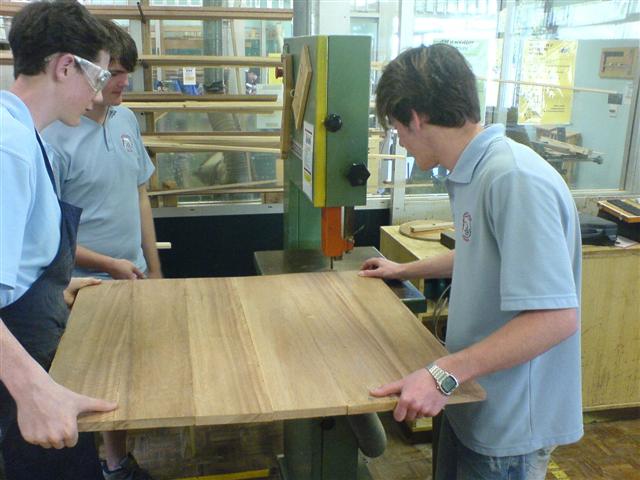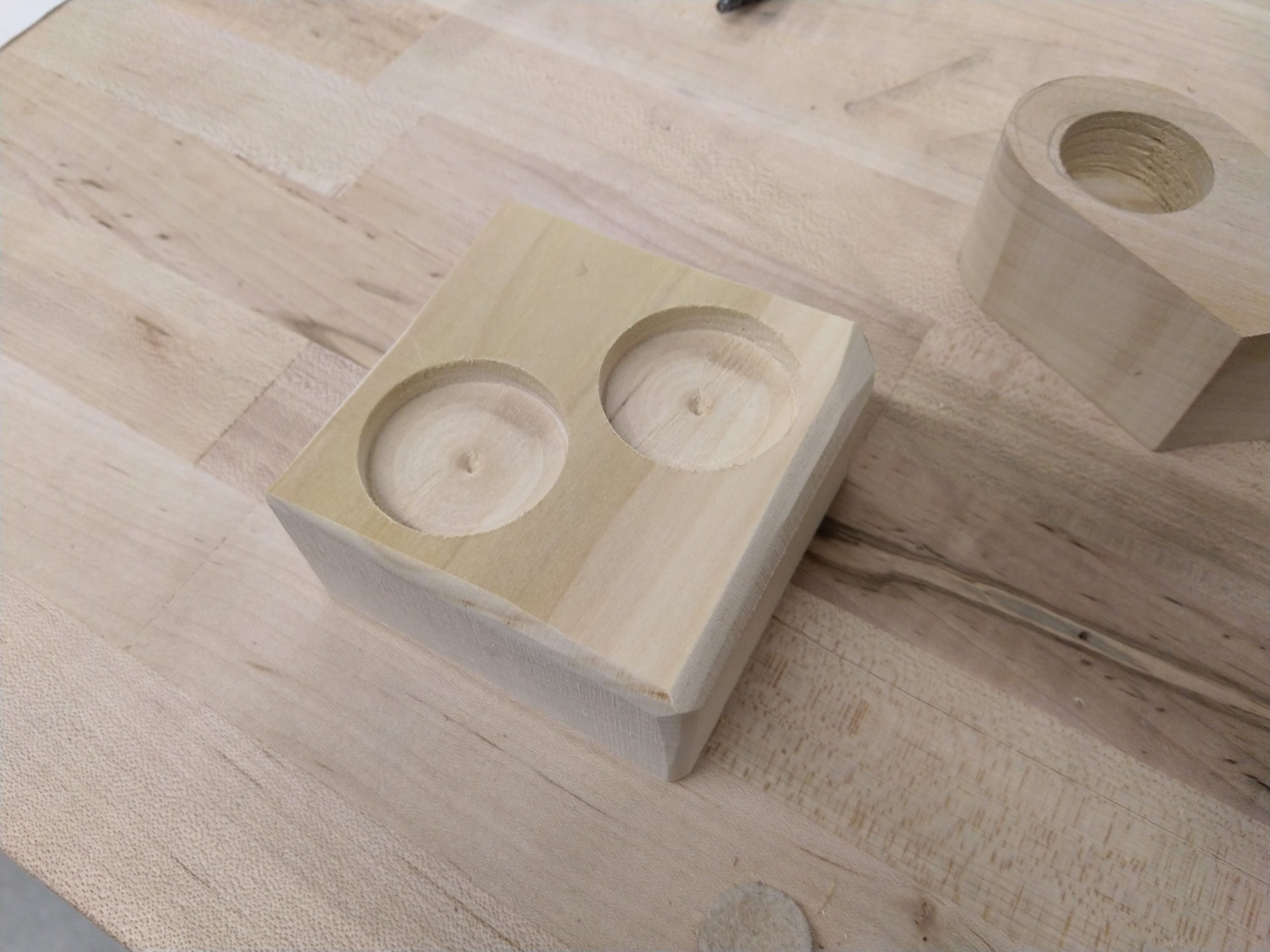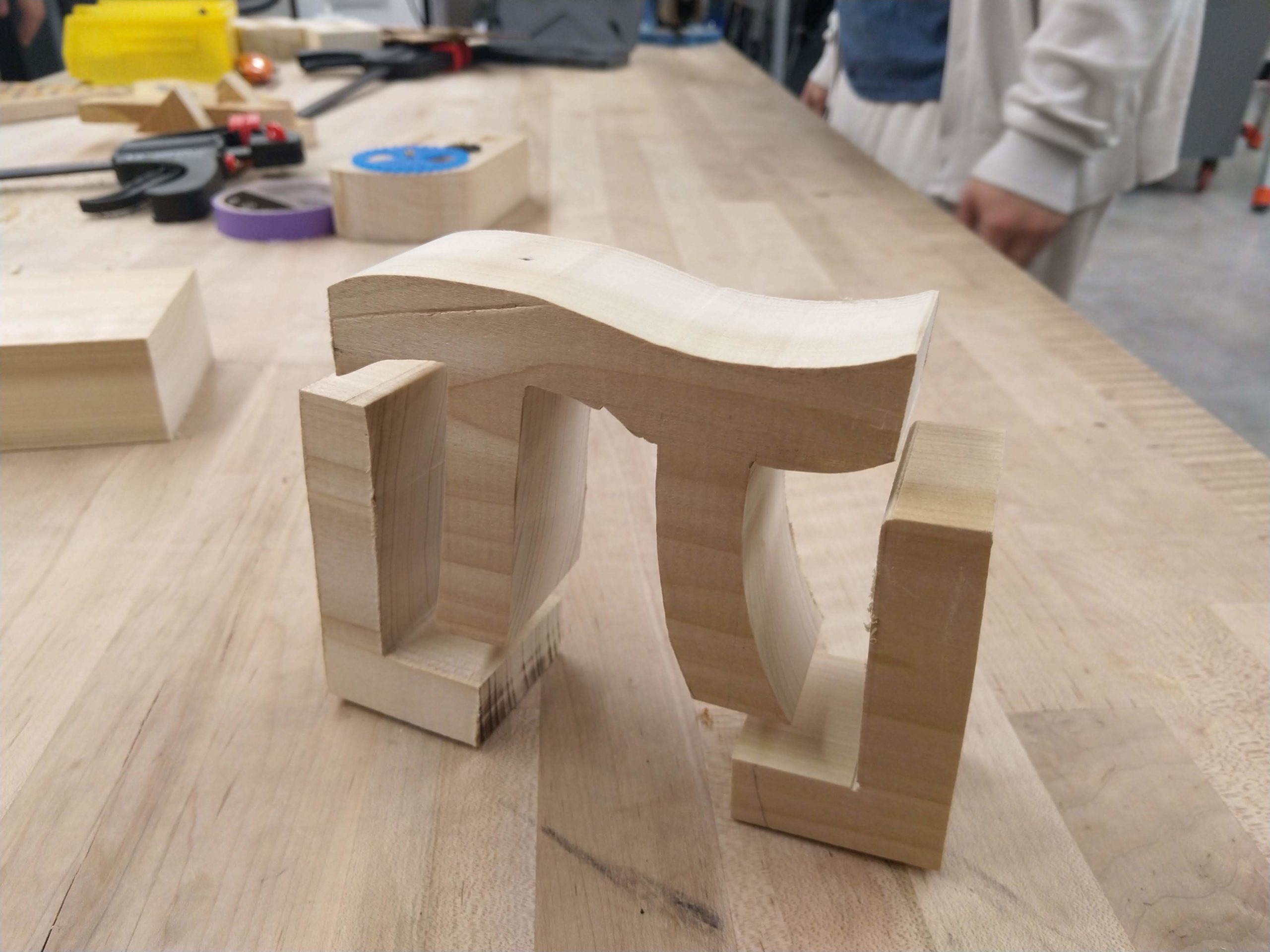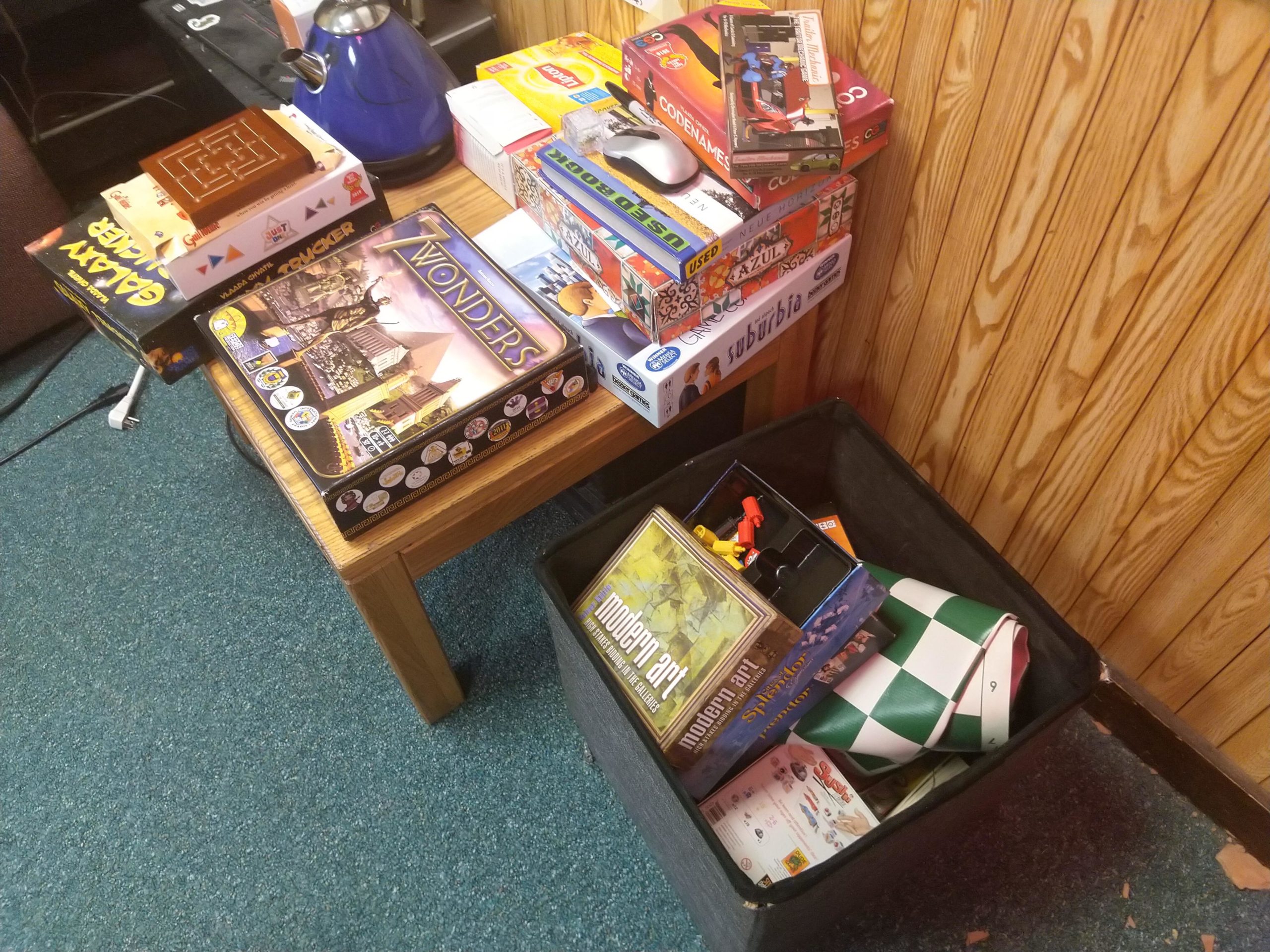
Three things I didn’t learn from class by CJ Q. '23
behold, the listicle
Writing blog posts is hard, but writing lists is easy. So here’s a list of three things I learned this semester that I didn’t learn from my classes.
How to use a bandsaw
A bandsaw is this machine with a thin metal saw that a motor drives up and down. You hold a piece of wood and push it into the saw in order to make a cut. To use a bandsaw, after checking if it’s the right bandsaw for the material you’re cutting, you turn a knob to raise the handguard, turn the machine on, and push.

i don’t have a picture so i went to wikipedia and i saw this picture and thought it was hilarious. from romtobbi, cc by-sa 3.0
I mentioned the first time that I ever worked with wood was during REX,01 residence exploration, a ton of events during orientation week where frosh explore the different residence halls when I learned to use power tools to help build a fort. I didn’t have any experience working with wood. I never thought I would be coming to MIT to chop stuff. But during REX, for one of the East Campus events, I learned how to use an electric drill and a circular saw.
I found it fun enough that I signed up for MakerLodge, a training program for first-years on how to use various tools. I answered this safety quiz online, signed up for a training slot (which was kinda hard; a lot of the slots were full), and then went. The training consisted of learning how to use a drill press, a belt sander, and a bandsaw. We were taught how to use the three tools to make this:

it’s supposed to be a tea light holder

turns out taking pictures of tea lights midday is hard
The edges of the block are unevenly sanded. They’re not sharp to touch, nor rough, they’re just bumpy and smooth. I signing up for a second training slot, which was a bit easier. For this one, we were instructed to use the three tools to make anything we wanted, as long as it used a reasonable amount of wood, used all three tools to some extent, and we could make it in less than two hours. Here’s what I made:

camera tricks
It’s the logo of my floor in East Campus, Floor Pi. The symbols surrounding the π are the floor function.
Originally, I planned to only make a π. It took several minutes of sketching until I got a shape that looked like π enough. I wanted it to have just the right proportions. It’d look weird if the legs of the π were too tall, or if the outline was too thin, or if the legs were both straight, or of the top wasn’t curved in the way it is.
Twenty minutes of sketching later, I got an outline I was happy with, and I cut the π out of the block. After sanding it down, there was some time left, and I still needed to use a drill. So I cut out the floor symbols, used a hand drill (not a drill press, I guess), to make holes, and then drove screws to attach the π to the floor symbols.
I think it looks really nice, especially if you view it from far away or from above. The way it’s pictured, the screws holding the π to the floor symbols aren’t visible, so it looks like it’s floating.
I’m not really fully satisfied with the way the π is cut, especially if you look underneath the middle part of the bar on top. It was challenging to use the bandsaw to cut an inside corner, because you can’t make sharp turns with it. You could only make arcs. And the saw itself is about a centimeter thick, so you couldn’t cut from a corner; there had to be some space behind where the cut began.

badly made in paint, approximately how i cut the π
I had to cut it in stages, removing a little bit of wood each time, working my way into the shape. After going back and forth with the bandsaw, I overshot with one of the cuts, so it left an uneven edge underneath the bar. Some sanding fixed it, but not to the extent I wanted to.
I was mildly annoyed at first, but I’m fine with it now. I’m a beginner to woodworking, after all. Just a year ago, I thought a π shape like I made would have taken hours upon hours of work, and I learned that it only took an hour or so. And a lot of people told me that it looks nice, which made me happy. It turns out I don’t have to be perfect in order to be happy with what I do.
How to play Castlefall
The people in Floor Pi like many things, like puzzles and fruit and plurals. But one thing that a lot of people on our floor like is board games. Our floor has a sizable board game collection.

on the table, from the top of each stack: nine men’s morris, just one, galaxy trucker, 7 wonders, traitor mechanic, codenames, a book (not a board game), azul, suburbia (not floorpi’s, but ec’s). in the box, visible: modern art, cities of splendor without the box cover and missing a lot of pieces, splendor, a chess mat, sushi dice.
The picture shows only some of the games we have on our floor. I was really happy that we had Modern Art, which was one of my favorite board games when I came to MIT, and also one of the favorite games of someone else on our hall. I’ve gotten to play Splendor and Azul and Just One, which are all games I’ve learned to play some time during my gap year, and all games I’ve loved.
I’ve learned a lot of new games since coming here too. I remember that during the Floor Pi retreat, back in Columbus Day weekend, we played more than a dozen games of Traitor Mechanic in a single night, an absurdly challenging hidden traitor game. I learned to play Sushi Dice, this silly game that involves rolling dice and hitting a bell. And our floor acquired Gizmos a week or two ago, which is like Splendor but better, and I’ve played it at least a dozen times since.

gizmos has this beautiful marble dispenser, which instantly makes it ten times better than any other board game
My favorite memories of playing games on hall, though, are of playing Castlefall. It’s not a board game per se. It doesn’t involve a board or any pieces or any cards, so it’s better described as a party game. As the name suggests, it’s a fusion of Castle of the Devil and Spyfall, and I heard that it was invented in 2017 by people in Epsilon Theta, one of MIT’s independent living groups. It then spread to Floor Pi, and we’ve played it a lot since.
Everyone playing is split to two teams, and each team is given the same word, but you don’t know who your teammates are. You’re trying to figure out either who’s on your team, or what the other team’s word is. If you’ve figured either one, you clap, and if you’re right, your team wins.
So the main mechanic of Castlefall is cluing. You’re given a word, and you have to give hints on what your word is. The hints should be subtle enough that other people wouldn’t be able to figure out what the word is based on the hints alone, but good enough that someone who does have the word would know that the hints belong to the word you have.
Since there aren’t any turns, a game of Castlefall turns to lots of people talking with each other about things like “their favorite color” or “a video game that involves fighting” or “something that we did earlier”, until someone claps. It takes around two minutes to play a round of Castlefall, and then everyone plays another round.
There’s something about the game that I find really fun. I’m not sure whether it’s the fact that there aren’t any turns, unlike Spyfall, so there’s never a second where you’re not doing anything; you’re always asking or answering or listening or thinking. Or maybe it’s how there’s something satisfying about giving a really good clue, or figuring out a clue that someone else gives.
Maybe it’s how each round only takes two minutes to play, which makes it so easy to chain dozens of rounds one after the other. We start playing at 1 AM, and soon enough we’ve played dozens of rounds, it’s 3 AM, and people need to sleep. Maybe it’s how the game is so replayable, which is why we’ve played it night after night after night. Or maybe because it’s such a good social game. Maybe it’s not even the game itself that’s fun, and maybe it’s just fun to talk to people.
I remember two days ago, I was talking to an alum who’s been around MIT for about seven years. He makes the case that every four years, the culture of a living group becomes very different from what it used to be, and gives an example of how some people in Floor Pi used to play a certain board game every night a couple years ago. I said that maybe culture wasn’t what specific board games people liked playing every day at the time, but the fact that people liked playing board games regularly in the first place.
And maybe culture is even more abstract than that; maybe it’s not board games, but just any nerdy activity that brings people together in the lounges, whether it’s playing a video game or watching anime. Maybe Floor Pi culture is how some people enjoy spending time with each other, whatever the activity is.
That’s definitely stretching it. But there’s just something nice about playing games, late at night, with people you care about.
How to get around MIT
I guess I’ll end the post with something I started learning since I got here. I still haven’t learned it completely, but I guess I’m decent at it now—it’s how to get around MIT.
I remember that I had to be constantly looking at the MIT map during orientation week. During international student orientation, I only really needed to be around East Campus and the Student Center. We walked from the Student Center to this big lecture hall in Building 4, 4-270, and if not for walking there with everyone I would’ve gotten lost. In fact, I did get lost when I walked there on my own the next day from East Campus.
My FPOP and REX didn’t really help me navigate around campus. You see, my FPOP02 First-Year Pre-Orientation Program, a program before orientation. Mine was DEAPS, Discover Earth and Planetary Sciences. had its activities all in the Green Building, which was right next to East Campus. REX didn’t really have activities outside of the dorms, Kresge, and Killian. I guess I did take Advanced Standing Exams, but I got lost walking to those rooms too. So I didn’t really navigate main campus until school started.
The first week or so was a lot of walking around with the map brought up. Almost all of my classrooms were in the first floor, except for 4-270, which made it a bit easier to navigate. Class began on a Wednesday. By Monday, I could go between classes without having to pull up a map. On Wednesday, I went between events hosted by various student groups on campus without having to pull up a map either.
And on Thursday, I navigated from Lobby 7 all the way to Building 66 through the tunnels, without having to look at the tunnel map, for the first time. Two nights after that, as I was walking out of Building 14 back to East Campus with my roommate Jeffery L. ’23, I said isn’t it weird that we’ve only been here for two weeks, but we can already navigate around campus?
I said, isn’t it weird, how quickly we’ve gotten used to living in MIT?
Isn’t it weird how I said, “let’s go home”, to refer to going back to East Campus?
And Jeffery replied, not really.
He’s right. It makes sense, it makes perfect sense.
But I wouldn’t understand that until much later.
- residence exploration, a ton of events during orientation week where frosh explore the different residence halls back to text ↑
- First-Year Pre-Orientation Program, a program before orientation. Mine was DEAPS, Discover Earth and Planetary Sciences. back to text ↑